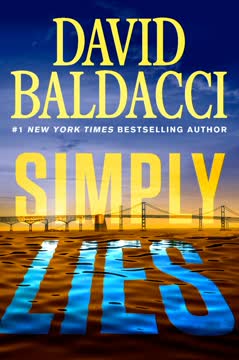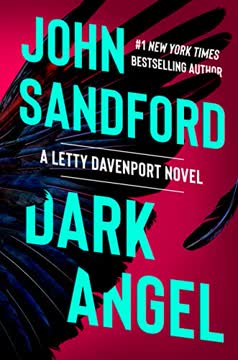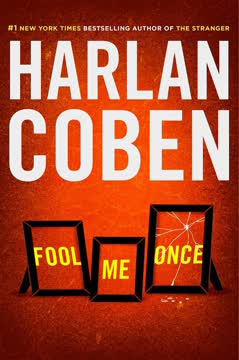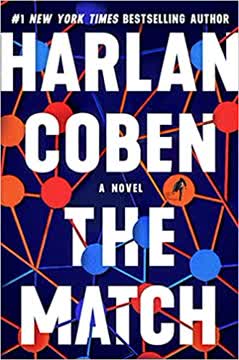Plot Summary
Prisoner of Grief
David Burroughs, once a loving father, is five years into a life sentence for the murder of his three-year-old son, Matthew. He is emotionally numb, wracked with guilt, and has cut himself off from the world, convinced that nothing can redeem him. The world believes he is a child killer, and even he sometimes doubts his own innocence, haunted by blackouts and the possibility of a sleepwalking crime. His marriage to Cheryl has ended, his family is shattered, and he has no hope—until a single, unexpected visitor arrives.
A Photo Changes Everything
Rachel, David's former sister-in-law, visits him in prison for the first time. She brings a photograph taken at an amusement park, showing a boy in the background who looks exactly like Matthew would at age eight, complete with a distinctive birthmark. Rachel's investigation, including age-progression software, suggests the boy could be Matthew. This revelation reignites David's will to live and sets him on a desperate quest to find out the truth about his son.
The Impossible Visitor
David and Rachel debate the meaning of the photograph. Rachel confesses she hasn't told Cheryl, David's ex-wife, fearing to destroy her fragile new life with false hope. David realizes that if the boy is alive, the real killer is still out there—and that any public investigation could endanger Matthew. He resolves to escape prison, enlisting the help of his godfather, Warden Philip Mackenzie, and his childhood friend, Adam.
The Escape Plan
With mounting threats inside prison—including a violent attack and a guard's attempt on his life—David's allies orchestrate a daring escape. Disguised as a police officer, David flees with Philip's help, staging a hostage scenario to buy time. The plan is nearly foiled, but David manages to slip away, setting off a massive manhunt. He contacts Rachel, and together they begin to chase the only lead they have: the mysterious boy in the photograph.
Prison Violence and Alliances
Inside prison, David faces threats from both inmates and corrupt guards. A notorious cannibal serial killer, Ross Sumner, tries to provoke and later kill him, while a guard named Curly is blackmailed into attempting David's murder. The violence and betrayals underscore the danger David faces, both inside and outside prison, and the lengths to which powerful people will go to keep the truth buried.
Family Ties and Old Debts
As David flees, the narrative explores the deep bonds and betrayals among his family and friends. Warden Philip risks everything for David, motivated by loyalty to David's dying father, Lenny. The story also delves into the criminal underworld of Revere, Massachusetts, where David seeks answers from childhood friend Eddie and the local mob, suspecting their involvement in the cover-up.
The Photograph's Truth
David tracks down Hilde Winslow, the key witness who testified to seeing him bury the murder weapon. Under duress, Hilde confesses she lied on the stand, blackmailed by a mobster with a white forelock—Skunk Kyle—who threatened her family. This revelation confirms David's suspicion that he was framed, but the motive and mastermind remain elusive.
The Attempted Murder
As David closes in on the truth, he is betrayed by Skunk Kyle and nearly handed over to the police. Instead, he is abducted and flown to Florida to meet Nicky Fisher, the retired mob boss. Nicky reveals that he orchestrated the false testimony as payback against David's father, but insists he had nothing to do with Matthew's disappearance. Nicky, moved by David's conviction, lets him go, signaling a shift in the underworld's stance.
The Great Prison Break
David's escape triggers a massive law enforcement response, led by FBI agents Max Bernstein and Sarah Jablonski. They piece together the connections between David, Rachel, and the photograph, but are always a step behind. Rachel, now a fugitive herself, uses her investigative skills to help David, risking everything for her nephew.
On the Run
David and Rachel follow the trail of the photograph, discovering it was taken at a corporate event for the Payne family's conglomerate. They realize the boy is being raised as Theo Payne, the secret son of Hayden Payne, a wealthy and disturbed heir. The investigation reveals a web of lies, including a fertility clinic mix-up and a cover-up involving powerful elites.
The Hunt Begins
Max and Sarah, suspicious of the official story, begin to question the original investigation. DNA tests reveal that the murdered boy was not David's biological son, deepening the mystery. Meanwhile, the Paynes, led by the ruthless matriarch Gertrude "Pixie" Payne, prepare to eliminate any threats to their secret.
The Lying Witness
David confronts the mob, learning that his father once planted evidence to convict a mobster's son, and that the mob's interference in his case was meant to balance the scales of justice. The mob, realizing David's innocence, withdraws their opposition, and Nicky Fisher hints at future retribution against the Paynes.
The Mob Connection
The story explores the complex morality of the mob, contrasting their code of not harming children with the Paynes' willingness to do anything to protect their legacy. Nicky Fisher's decision to let David go and his later promise of justice for the Paynes add a layer of poetic justice to the narrative.
Rachel's Secret
Rachel confesses her role in helping Cheryl hide her fertility clinic visit, a secret that contributed to the unraveling of David and Cheryl's marriage. Her guilt over past actions, including a journalistic scandal that led to a friend's suicide, parallels the novel's themes of truth, lies, and the cost of secrets.
Hayden's Obsession
Hayden Payne, obsessed with Rachel and desperate for a family, manipulates the fertility clinic to use his sperm for Cheryl's insemination. When he learns the truth, he orchestrates the kidnapping of Matthew, replacing him with a terminally ill orphan to fake Matthew's death. Hayden raises Matthew as his own, with the help of his grandmother Pixie, who covers up the crime to protect the family.
The Truth About Matthew
David and Rachel confront Hayden at the Payne estate, armed with evidence and determination. Hayden admits to the crime, but insists he did it out of love and a sense of destiny. Pixie, the true mastermind, reveals she falsified the paternity test to keep Hayden from returning Matthew. The police arrive, and in the ensuing chaos, David is shot but survives.
The Final Confrontation
David is reunited with Matthew, who recognizes him as his father. The Paynes' power and wealth shield them from prosecution, but the mob's promise of retribution hangs over them. David is exonerated, and the family begins to heal. Rachel and David find solace in each other, and Matthew starts a new life, free from the lies that once defined him.
Aftermath and Redemption
Eight months later, David attends his father's funeral, surrounded by family and friends. He and Cheryl share custody of Matthew, and Rachel has become his partner. The wounds of the past linger, but there is hope for the future. The story ends with a sense of hard-won peace, as David reflects on the power of love, the resilience of children, and the possibility of redemption.
Characters
David Burroughs
David is a man broken by grief and guilt, imprisoned for a crime he did not commit. His psychological journey is one of numbness, self-doubt, and eventual awakening when hope is rekindled by the possibility that his son is alive. His relationships—with Cheryl, Rachel, his father, and his friends—are marked by loyalty, betrayal, and a desperate need for redemption. David's development is driven by his unwavering love for Matthew and his willingness to risk everything for the truth.
Rachel Anderson
Rachel is David's former sister-in-law and the catalyst for the story's events. Haunted by her own past mistakes, including a journalistic scandal, she seeks redemption by helping David. Her investigative skills, courage, and emotional intelligence make her an indispensable ally. Rachel's relationship with David evolves from familial loyalty to deep partnership, and her actions are motivated by love for her nephew and a desire to right past wrongs.
Cheryl Burroughs (Dreason)
Cheryl is David's ex-wife and Matthew's mother. She is torn between grief, guilt, and the need to move on. Her secret visit to the fertility clinic and subsequent lies contribute to the unraveling of her marriage and the tragedy that follows. Cheryl's psychological complexity is revealed in her interactions with David and Rachel, and her eventual acceptance of the truth is both painful and liberating.
Hayden Payne
Hayden is the wealthy heir who orchestrates Matthew's kidnapping, driven by an unhealthy fixation on Rachel and a desire for a family. His actions are rationalized by entitlement and a warped sense of destiny. Hayden's psychological profile is that of a narcissist, capable of both charm and cruelty, and his downfall is marked by denial and self-justification.
Gertrude "Pixie" Payne
Pixie is the true mastermind behind the Payne family's crimes. Her primary motivation is the preservation of the family legacy, and she is willing to do anything—including murder and deception—to protect it. Pixie's psychological strength lies in her cold pragmatism and ability to manipulate those around her, but her actions ultimately sow the seeds of the family's undoing.
Philip Mackenzie
Philip is torn between his duty as a prison warden and his loyalty to David and Lenny. His decision to help David escape is driven by love, guilt, and a sense of justice. Philip's character embodies the tension between law and morality, and his actions have lasting consequences for himself and his family.
Adam Mackenzie
Adam is David's lifelong friend and Philip's son. He risks his career and freedom to help David, motivated by loyalty and a belief in his friend's innocence. Adam's role is that of the loyal sidekick, providing emotional and practical support throughout the escape and investigation.
Nicky Fisher
Nicky represents the underworld's complex morality. He orchestrates the false testimony against David as payback for his own son's imprisonment but ultimately recognizes David's innocence and lets him go. Nicky's character is a study in loyalty, vengeance, and the limits of criminal honor.
Skunk Kyle
Skunk is the mobster who blackmails Hilde Winslow into lying on the stand. His presence is a constant threat, embodying the dangers of the criminal world and the ease with which innocent lives can be destroyed by those in power.
Max Bernstein and Sarah Jablonski
Max and Sarah lead the manhunt for David, balancing their duty to the law with growing doubts about his guilt. Max, in particular, is drawn to the possibility of David's innocence, while Sarah remains committed to procedure. Their partnership reflects the broader themes of justice, truth, and the fallibility of institutions.
Plot Devices
False Conviction and Unreliable Memory
The novel's central device is David's conviction for a crime he cannot remember, complicated by blackouts and sleepwalking. This creates ambiguity and tension, forcing both David and the reader to question the nature of truth and guilt.
The Photograph as Catalyst
The photograph of a boy who looks like Matthew serves as the inciting incident, propelling the narrative forward. It functions as both a literal clue and a symbol of the power of hope and the dangers of wishful thinking.
Layered Mysteries and Red Herrings
The story employs a classic whodunit structure, with false leads, unreliable witnesses, and a web of secrets. The involvement of the mob, the fertility clinic, and the Payne family creates a complex tapestry of motives and opportunities, keeping the reader guessing until the end.
The Power of Wealth and Corruption
The Payne family's ability to manipulate the system, cover up crimes, and evade justice highlights the theme of power and its corrupting influence. The contrast between the mob's code and the Paynes' amorality underscores the novel's moral ambiguity.
Redemption and the Cost of Secrets
The narrative structure is cyclical, beginning and ending with David's grief and isolation, but ultimately moving toward redemption through the uncovering of secrets, the restoration of family, and the possibility of new beginnings.
Analysis
I Will Find You is a high-octane, emotionally charged thriller that explores the devastating consequences of lies, secrets, and the abuse of power. At its core, the novel is about a father's relentless love and the lengths to which he will go to save his child and reclaim his life. Harlan Coben weaves a complex narrative that interrogates the fallibility of memory, the corrosive effects of guilt, and the moral gray areas between justice and vengeance. The story critiques the ways in which wealth and privilege can subvert the law, while also examining the redemptive power of truth, loyalty, and love. Ultimately, the novel suggests that healing is possible, but only when we confront the past, accept our flaws, and fight for those we love—no matter the cost.
Last updated:
Review Summary
I Will Find You receives mostly positive reviews for its fast-paced, suspenseful plot about a wrongly convicted father searching for his supposedly dead son. Readers praise Coben's engaging writing style and ability to create tension. Many find the story gripping and hard to put down, despite some unrealistic elements. Critics note formulaic aspects and cartoonish characters, particularly the FBI agents. Overall, reviewers appreciate the thrilling ride and satisfying conclusion, recommending it as an entertaining, if somewhat over-the-top, read.
Similar Books
Download PDF
Download EPUB
.epub digital book format is ideal for reading ebooks on phones, tablets, and e-readers.





















